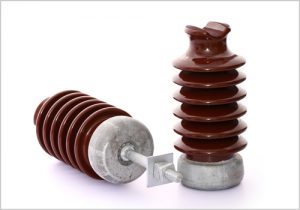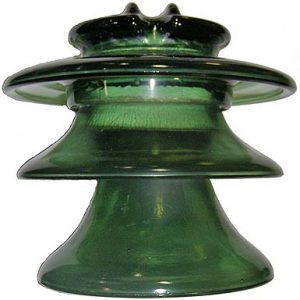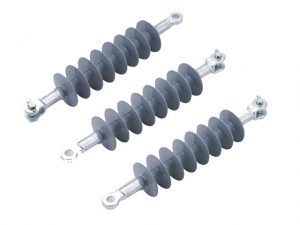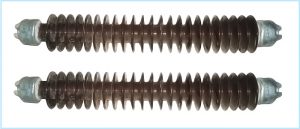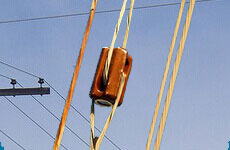Purpose of an insulator is to prevent the unwanted flow of current from the energized conductor or conducting parts. Electrical insulation plays a vital role in every electrical system. An electrical insulator provides very high resistance so that practically no current can flow through it.
Insulating Materials
Basically, an insulating material or insulator contains a very small amount of free electrons (charge carriers) and, hence, could not carry electrical current. But, a perfect insulator does not exist, because even insulators contain a small number of charge carriers which may carry leakage current (negligibly small). In addition, all insulators become conductive when a sufficiently large voltage is applied. This phenomenon is called as insulation breakdown and the corresponding voltage is called as breakdown voltage.
An insulating material must have high resistivity and high dielectric strength. Additional desirable properties of an insulating material depend on the type of applications. The insulating material used for manufacturing insulated cables/wires must be flexible such as rubber or PVC. On the other hand, insulator used to support overhead power lines must be mechanically strong, such as porcelain or glass insulators.
Important Properties Of Insulating Materials
- Resistivity (specific resistance) is the property of a material that quantifies how strongly the material opposes to flow of electric current. The resistivity of a good insulator is very high.
- The dielectric strength of a material is the ability to withstand electric stresses without breaking down. Dielectric strength is usually quoted in kilovolts per millimetre (kV/mm).
- Relative permittivity (or dielectric constant) is the ratio of the electric flux density produced in the material to that produced in a vacuum.
- Electrical dissipation factor (dielectric loss) is the ratio of the power lost in the material to the total power transmitted through it. It is given by the tangent of the loss angle and, hence, also known as tan delta
Some of the commonly used electrical insulating materials are paper, mica, Teflon, rubber, plastic, polyvinyl chloride (PVC), glass, ceramic, porcelain etc.
Types Of Electrical Insulators
- Pin insulators
- Suspension insulators
- Strain insulators
- Shackle insulators
The above types of insulators are commonly used in overhead power lines.
Some more types of insulators are as follows
Post Insulators
A post insulator is more or less similar to a pin insulator. It has a relatively higher number of petticoats and rain sheds. Post type insulators are mostly used in substations, but in some cases, they can be used for overhead lines also. Thus, there is two types of post insulators: (i) Station post insulators and (ii) Line post insulators.
A line post insulator can be used for voltages up to 132 kV (pin insulators are used for up to 33 kV). Station post insulators are used in substations for low as well as very high voltages. For higher voltage levels, multiple station post insulators are stacked together.
Glass Insulators
Pin type glass insulators were earlier used in the 18th century primarily for telegraph/telephone lines. Use of ceramic and porcelain insulators spread in the 19th century. They proved superior protective properties than glass and become widely used. However, use of toughened glass insulators is becoming popular today. Unlike porcelain or non-ceramic materials, toughened glass never ages, and thus, offers a longer lifespan. Toughened glass insulator discs can be used in suspension insulators.
Polymer Insulators
Polymer insulators are composed of a fibreglass rod covered by polymer weather sheds. Polymer weather sheds are generally made of silicone rubber. Few other materials may also be used for weather sheds, such as polytetrafluoroethylene (PTFE or Teflon), EPM, EPDM etc. Polymer insulator is sometimes also called as composite insulators or silicon rubber insulators. They are almost 90% lighter than porcelain insulators and still offer almost equal or better strength.
Long Rod Insulators
A long rod insulator is basically a porcelain rod with an outside weather shed and metal end fittings. The main advantage of long rod design is the elimination of metal parts between the units, thereby increasing the insulator’s strength. Long rod insulators can be used at suspension locations as well as tension locations.
Stay Insulators
The insulator used in a stay wire (guy wire) is called as stay insulator. It is usually made up of porcelain and is designed so that in case of breakage of the insulator, the stay wire will not fall to the ground. It is also called as egg-type strain insulator.

